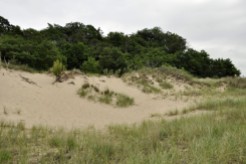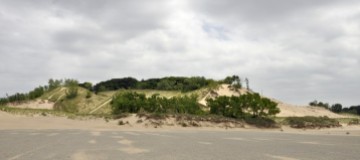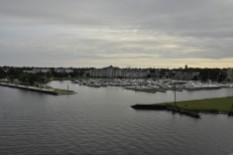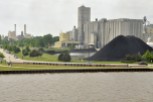I don’t particularly like driving. Never have. Especially on the UK’s crowded roads. But it’s a necessity that I live with.
On the other hand, driving around the USA has been a much more pleasant experience. I have enjoyed¹ the road trips (covering at least 12,000 miles) that Steph and I have made around the USA since 2011.

Budget® Car Rental gave us a Jeep Wrangler this year.
Why? Well, for one thing, most of the the routes I have chosen have not been congested, and it’s possible to drive mile upon mile and hardly see another vehicle. In many places, even in the remotest locations, road surfaces are quite good, or indeed, very good. Also, having lived in countries where they drive on the ‘wrong’ side (Peru, Costa Rica, and the Philippines) for almost three decades, driving on the right in the USA doesn’t faze me.
Those who follow my blog, or come across my stories from time to time, will know that I try and illustrate these quite liberally with photos that I have (mostly) taken myself. But on many of our trips across America there are often no places to stop conveniently and take in the landscape.
On a couple of occasions, when we traveled through the redwoods of northern California, or, more recently, worked our way through the Appalachians, for example, Steph held a video camera. But that’s never been a satisfactory solution.
So, earlier this year, I decided to invest in a Nextbase dashcam, which I used during our most recent trip to record the whole nine days. Hours of video to scan, and decide on the best clips. Was it worth it, you might very well ask? I think so, especially as the software bundled with the cam permits me to capture individual frames as images that I can use in the same way as those from my DSLR.
I try to choose routes along scenic byways, where we’ll often see important features in the landscape. During this year’s trip we took in the Delaware Water Gap National Recreation Area along the border between Pennsylvania and New Jersey, as well as the Monongahela National Forest in West Virginia.
The Delaware Water Gap National Recreation Area follows the course of the Delaware River (map), and forms the state line between Pennsylvania and New Jersey. We traveled down the valley on the PA side, northeast to southwest. At the southern end, the Delaware River takes a sharp turn east cutting through a significant mountain ridge.
There are a couple of visitors centers. In the north of the area is Dingmans Falls Visitor Center, and the falls close by. This video takes you from the entrance to the Recreation Area in the north, to Dingmans Falls, and south to the Gap, before emerging in New Jersey and looking back westwards to the Gap.
The Monongahela National Forest (19) is one of 26 national forests nationwide.
We’ve been fortunate to pass through several others during previous road trips: Green Mountain/White Mountain (15) in the northeast; Daniel Boone (10) in Kentucky; Allegheny (1) in western Pennsylvania; Black Hills (3) in South Dakota; Shoshone (25) and Bridger-Teton in Wyoming; and Coconino (8) in Arizona; and many more forests and wilderness areas that are not necessarily part of the national forest system.
Monongahela covers a vast area of the ridges and valleys of West Virginia. We traveled southwest down the valleys, but as our destination on that day was Appomattox in central Virginia, we had to keep turning east, climbing and descending ridges in frequent succession.
We stopped at the Seneca Rocks Discovery Center to take a look (from a distance) at the rocks themselves, an enormous quartzite crag, which apparently the only true peak on the east coast.
Criss-crossing these ridges and valleys was where many battles and skirmishes were fought during the Civil War from 1861-1865. It’s hard enough driving over these ridges, never mind tramping mile after mile, hauling wagons with matériel and provisions, ill-clothed and ill-shod, and then having to fight a battle. Awe inspiring!.
Driving across the USA opens one’s eyes to the enormity of the country, the vastness of the landscapes that open up ahead. And on this particular trip, the scale of the challenge to ford rivers, even the ocean, came home to me as we passed over some remarkable bridges, exquisite examples of civil engineering. So, rather than trying to describe each of the bridges that caught my attention take a look at these two videos (speeded up as were the others above). Also check out the map to see where they are located.
I decided to make a separate video of the crossing of Chesapeake Bay that connects Virginia at Norfolk (and its naval base) with the Delmarva Peninsula to the east. Built on stilts across the bay, and incorporating two deep tunnels and a higher bridge on the eastern end, I was blown away by the scale of the project.
At the north end of Chesapeake Bay there is another long crossing, shown at the end in the first bridge video.
I hope you enjoy these vignettes of travel through the eastern USA, as much as we did driving there and putting together the videos.
~~~~~~~~~~~~~~~~~~~~~~~~~~~~~~~~~~~~~~~~~~~~
¹ There are aspects of driving in the USA that still irk me, however. Such as:
- Vehicles entering interstates at high speed, and not matching their speed to existing traffic.
- Overtaking on both sides.
- Rear brake lights that are also indicators on many models.
- Locals who are reluctant to overtake on clear roads, but will tailgate.
And there are rules of the road that one has to be aware / careful of:
- Low speed limits, typically 55 mph on US and state roads (although from my experience this year, hardly anyone seems to take notice of these limits.
- Stopping rules for school buses – this caught me out once in northern California, as I thought only vehicles on the same side as the bus had to stop. No; both carriageways have to stop.
- Turning right on a red light can be confusing.
- Pedestrian rights when one is turning left, even on a green light.
- Priority rules at all-way stop signs. There are few roundabouts that I’ve come across in the USA, although a few more than usual during this year’s trip.
- One can get caught out (especially approaching traffic lights) when entering a right or left lane, and having to make a turn.







 Until about four months ago, I’d never heard of
Until about four months ago, I’d never heard of 

































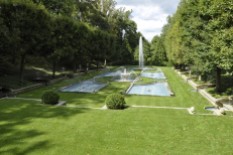





























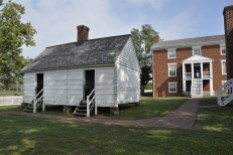

















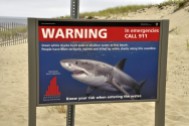

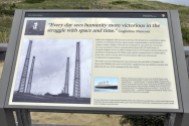














































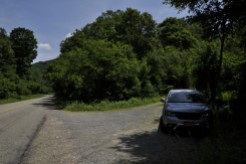






 Just north of the state line we took a short detour to
Just north of the state line we took a short detour to 



